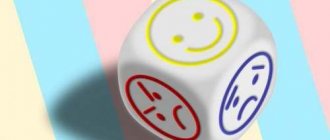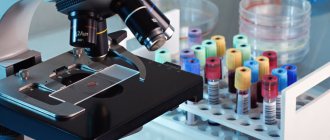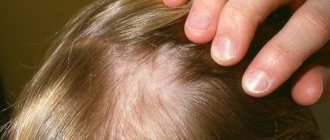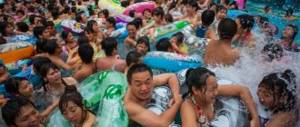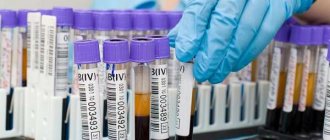Stroke is currently one of the most serious diseases. It affects almost all of humanity and, unfortunately, no one is immune from it. If previously the patient’s age was mainly senile, after 60 years, now unexpectedly a stroke can occur in the younger generation. The reason for this is various factors. Usually, treatment and rehabilitation take a long time and it is not a fact that a person will completely be able to return to a normal rhythm of life.
In medicine, a stroke is usually called a cerebrovascular accident in which the flow of blood through the vessels is disrupted, the vessels burst and the brain does not receive the required amount of oxygen. The mortality rate from stroke is high, but if a person manages to survive, then his life becomes difficult. Often the patient becomes disabled and cannot care for himself.
Types of strokes
Among the medical reference books and terminologies you can find the following types of strokes:
- Ischemic stroke. One of the additional names is cerebral infarction. It can be found in people over 60 years of age. Doctors most often diagnose this type in patients. The main reason is related to the blood and arteries - it is difficult for liquid connective tissue to pass through the blood vessels, due to the fact that the walls can thicken or, on the contrary, decrease, less blood flows to the brain, which means that oxygen and nutrients almost do not penetrate. This type of stroke is also dangerous because there is a possibility of a repeat process. Blood clots form in the blood, which subsequently clog the blood vessels. Therefore, it is important to make an accurate diagnosis as soon as possible and prevent unpleasant consequences.
- Hemorrhagic stroke . It is caused by hemorrhage and is divided into two subtypes - cerebral and subaranchoidal. The first subtype occurs at a younger age - from 45 years. There are several reasons for this - atherosclerosis, hypertension or frequent high blood pressure, various blood diseases. It does not occur often, but nevertheless poses a serious threat to life and health. One of the subsequent pathologies is an aneurysm. The second subtype is subaranchoidal - this type of stroke occurs when the blow falls on the cerebrospinal fluid. The age category here is even younger - from 30 years. The reasons are simple: young people who lead an unhealthy lifestyle are susceptible.
- The third type of stroke is a micro-stroke . Its effect is short-term - just at some point the blood stops flowing to the brain. This process usually takes about ten minutes. At the same time, a person feels unpleasant symptoms - dizziness, a sharp change in blood pressure, and wobbly legs. This type of stroke is dangerous because it is a harbinger of a more serious disease and, if you do not pay attention to it in time, the consequences will be disastrous.
Although stroke bypasses some people, it is necessary to know about its types in order to help a loved one at the right time.
What does inaction lead to?
Ignorance of what a stroke looks like and failure to provide timely assistance can cause serious consequences:
To reduce the severe consequences of the resulting pathology, it is recommended to remember how a stroke manifests itself (three main signs) and what to do in case of stroke.
Why does a stroke happen?
There are many reasons why this process occurs in the human body. Sometimes there are no warning signs, a person lives calmly and enjoys life, according to all tests he is healthy, but at one moment such a situation happens. The causes of stroke in men and women can be the following:
- High blood pressure. With hypertension, a person’s blood pressure goes off scale and does not show normal numbers, the vessels are under high pressure, and a rupture can happen at any time.
- Various diseases associated with cardiovascular activity. For example, heart rhythm disturbances—an erratic rhythm and contraction of the ventricles and atria can cause blood clots, and therefore increase the risk of stroke.
- Cholesterol and cholesterol plaques, which also clog blood vessels, can cause bleeding in the brain.
- Stroke also occurs in people with high blood sugar levels. Glucose also affects the elasticity of blood vessels and, with high sugar, reduces it.
- Aneurysm rupture. Aneurysms are internal formations, invaginations and protrusions, under the influence of blood flow they can, like blood vessels, rupture and cause any type of stroke, including hemorrhagic.
- Blood clotting disorder. The formation of clots or simply thick blood can complicate its movement through the vessels.
- Wrong lifestyle. This point should include several factors - smoking, poor diet, alcohol and drugs. It's no secret that these aspects of modern life have a bad effect on all systems of the human body, so all doctors recommend, in addition to any medications, to combine the treatment process with establishing a lifestyle.
How to help a patient
Knowing what to do if a person has a stroke can improve the outcome of treatment for the victim.
- Call an ambulance. The operator must describe in detail the symptoms experienced by the victim.
- Provide the person with a comfortable position. It is recommended to lay on a flat surface, elevating your head and shoulders with a pillow or rolled-up clothing.
- Take care of proper breathing. To do this, you need to unfasten tight clothes, loosen belts or ties.
- Try to calm down. To briefly describe what a person feels during a stroke, it is fear due to the inability to understand what is happening to him. In the room where the patient is located, it is necessary to remove all sound stimuli (turn off the TV, computer or radio), close the curtains and ask people who are not involved in providing assistance to leave the room. You need to speak to the victim in a calm voice.
- Monitor a person's condition. Monitor your breathing, and if vomiting occurs, turn your head to the side, preventing vomit from entering the respiratory tract.
- Measure your blood pressure and pulse (if possible). Often, before a stroke, a person experiences increased blood pressure. With high blood pressure, if the patient is conscious, it is allowed to give a Moxonidine or Copoten tablet.
- Apply ice to the back of the head and a warm heating pad to the legs.
There are no universal signs of how a stroke begins - the symptoms depend on the individual characteristics of the body and the location of the ischemic focus. Some patients become aggressive, but most are disoriented and depressed by their condition, sometimes experiencing pathological drowsiness.
It is important to monitor the victim’s consciousness, preventing him from falling asleep. To do this, it is recommended to involve the person in the conversation, asking them to answer questions in monosyllables. A sudden refusal of contact indicates a worsening of the person’s condition and the development of coma.
First aid for stroke (video):
Provoking factors: who is at risk
Risk factors are divided into two types - controlled and uncontrollable. Controllable risk factors are those that a person can monitor, observe, and monitor their performance. If a person cares about his health, he will monitor his diet and consult a doctor in a timely manner. Uncontrollable are those factors in which a person cannot influence them in any way.
One of the main uncontrollable factors is, naturally, age. A person has no right to manage time, and the older he gets, the more different diseases he develops. Stroke, of course, is more common in older and older people.
Gender is also an important thing. Statistics from medical institutions show that men are more likely than women to experience a stroke. However, the percentage of women who survive is much lower.
Treatment
Apoplexy is such a dangerous condition that requires immediate medical attention. As soon as specialists understand what kind of stroke has occurred, they will immediately begin therapy. Given the fact that there are different classifications of strokes, the definition of a specific disease will play a leading role.
It is important to start treatment on time; stroke is considered an extremely dangerous condition . The person is given special drugs that increase blood flow and dissolve blood clots. It is also important to relieve spasm and eliminate the inflammatory process. Separately, sedatives may be required if the person is too restless.
The hospital knows exactly how to treat a cerebral stroke. For this reason, you should immediately contact a doctor. You may have to surgically remove the blood clot or drain blood from the brain area. In the first hours after an attack, it is much easier to help a person.
Consequences of cerebral infarction
Since a stroke affects the brain, the overall consequences affect all human organs and systems. The person may fall into a coma or remain permanently disabled. Doctors often diagnose memory, speech, and hearing disorders. Motor function is also noticeably reduced. Movements may be hesitant or absent altogether. The following conditions are also often observed:
- Paralysis. This is exactly what movement is all about. It becomes difficult for a person to make certain movements independently. He can't feel his limbs.
- Coma. It’s good if a person gets out of it successfully. The phenomenon itself is dangerous because if a coma occurs, then most likely the person is on the verge of life and death.
- Psychosis. As a consequence, something like this could happen. In this case, the person becomes unstable in his psycho-emotional state. A person cannot control this on his own; his mood often changes.
- Headache. After a cerebral infarction, a person may often experience headaches. They are also associated with increased pressure or temperature.
The most important consequence is still considered death.
Home testing for stroke
When the interlocutor suddenly loses the thread of the conversation, and his gaze becomes strange, then people who do not work in medicine develop a feeling of panic and most cannot remember what signs of an approaching stroke should be looked for in the victim.
Experts offer a simple test on how to determine a stroke at home.
A person needs to check for three signs:
- Speech. The victim speaks slurredly, having difficulty pronouncing complex words. The answers of a patient with brain damage become short and not always accurate (he says his name and age incorrectly, finds it difficult to say where he is).
- Facial expressions. A smile or bared teeth is the main test for a stroke. The facial muscles on one side of the face will act weaker and one corner of the mouth will be slightly lowered when grinning or smiling.
- Symmetrical hand movements. The right side is controlled by the left hemisphere, and the left by the right. If an ischemic focus occurs, the movement of the arm on one side of the body will be slower, and signs of coordination impairment will appear.
Recommendations on how to check for a stroke at home help only if there is a disruption in blood flow and brain tissue is damaged.
The manifestation of an impending stroke lesion is not always accompanied by severe symptoms; it often manifests itself only in stupor and headaches.
Preventive measures
It is always easier to prevent a disease than to treat it in a long and painful manner. Preventive measures are not so complicated; they require attention and inclusion in your life. The rules are as follows:
- It is worth monitoring your weight and preventing obesity. With obesity, all organs do not function as they should, and there is a large load on the blood vessels.
- Avoid high blood pressure . The pressure should be at a level that feels comfortable.
- Any diseases related to the heart and blood vessels must be treated and not allowed to progress.
- Controlling blood sugar
- Proper nutrition with all the necessary vitamins and minerals should definitely be included in your life.
- Sports and physical activity are needed not only for hardening, but also for good spirits.
Unfortunately, after a stroke, a person often dies; in such a situation, funeral services are needed, about which you can read the details.
Prevention measures
According to statistics, more than 40% of patients who have suffered a stroke experience a recurrent disturbance of cerebral blood flow within 3-5 years, which is more severe and almost always ends in disability.
How can you tell if a person has had a stroke? To do this, just ask the patient while collecting anamnesis. Most people will tell you not only when the pathology arose, but also what consequences remained with incomplete restoration of brain function (the exception is people with memory impairment caused by acute ischemia or other brain diseases).
If it is impossible to interview a person, a CT scan is a way to determine whether there was a stroke. During a computer scan, layer-by-layer images are taken to identify foci of necrosis.
Diagnostics
Diagnostic measures include:
- Inspection. UZP test. It is named after the first three actions that the patient must perform: smile, speak and try to raise his hand.
- Assessment of the patient's general condition by a doctor.
- An accurate and prompt examination of the patient is prescribed; magnetic resonance therapy or computed tomography will help.
- Lumbar puncture will distinguish cerebral hemorrhage from other brain pathologies.
- Computed tomography and magnetic resonance imaging are used to identify the fact of a stroke, clarify its nature (ischemic or hemorrhagic), the affected area, and also to exclude other diseases with similar symptoms.


